Upgrade to a custom Shopify theme when the estimated cost of lost sales exceeds the cost of a custom theme. Do not upgrade to a custom Shopify theme if your current free or paid templated theme looks pretty.
Shopify is perhaps the biggest, most powerful eCommerce platform around, and what makes it so attractive to eCommerce stores of any size is the focus on scalable solutions. A one-person business can pay less for the basics while a major enterprise can go all-out on the details.
This is especially true for Shopify themes: small stores can drag and drop, while big stores can delve into the code. But when should a business upgrade to a custom theme? As award-winning certified shopify partners, Fyresite is especially well-equipped to help businesses with the transition. Follow this guide to discover when your business should upgrade to a custom Shopify theme — it may be sooner than you think.
Upgrade to a custom theme when . . .
- Templates don’t have the right features
- the design looks too unprofessional or off-brand
- the website looks bad on mobile
- lots of customers drop off at a specific point
- lots of customers drop off at several points
- pages load too slowly
Templates don’t have the right features
Most of the time, free themes work very well early on, but fall apart as the business grows. Some of Shopify’s most successful themes have limited capabilities, and as a brand grows, they may want something more custom. It’s a natural part of every business lifecycle. Consider State Forty Eight. This apparel store saw steady growth in sales, brand recognition, and return customers. Thus, State Forty Eight invested in a custom Shopify theme to continue to grow the brand.
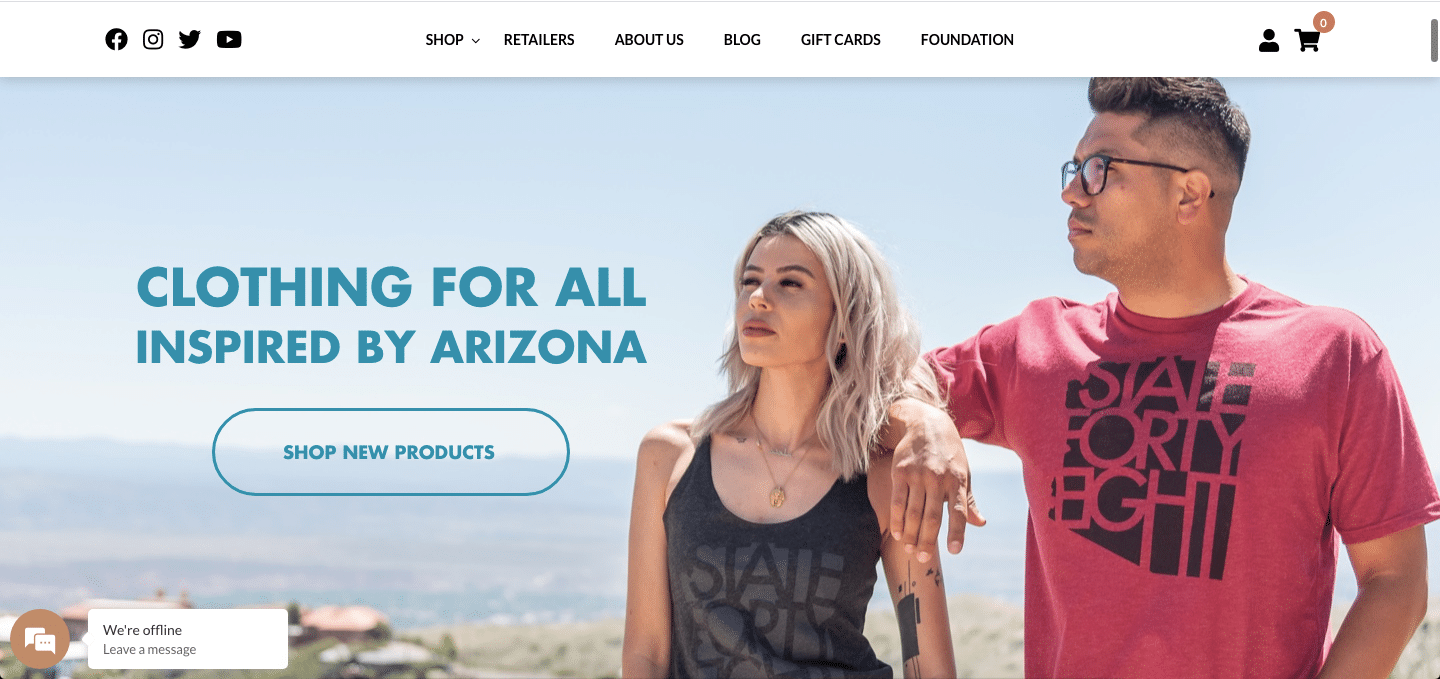
State Forty Eight, redesigned by Fyresite, looks better and has more custom functionality. Launch State Forty Eight!
How did the custom theme help? It gave the State Forty Eight team exactly the capabilities they needed. As a result, sales increased significantly and cart abandonment dropped. The original website wasn’t bad, but the custom Shopify theme gave the company more power.
The design looks too unprofessional or off-brand
If a picture speaks a thousand words, why are so many websites . . . “silent?”
Every good website must instantly communicate the following:
- What the company does
- Why the company does it
- What makes the company special
If it doesn’t, it’s not on-brand, and people will leave.
Lovewild Design, for instance, took this visual storytelling to the next level in their custom Shopify theme. The original looks clean, but generic, while the redesign looks natural, friendly, and “blooming.”
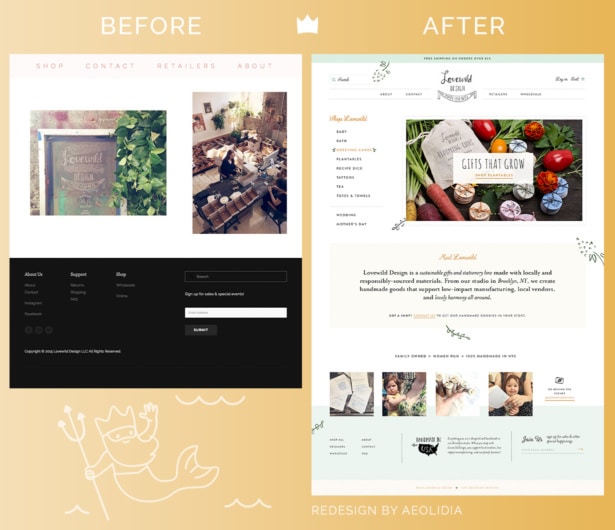
A wonderful redesign by Aeolidia that captures the branding of Lovewild design. Launch Lovewild Design!
The first design isn’t bad, but it isn’t fully on-brand. The redesign, however, fits the changing needs of the busines sperfectly, making it a worthwile investment.
The website looks bad on mobile
Websites cannot function without good mobile design. It’s not up for debate.
More than half of all pageviews come from mobile devices. If the website doesn’t work perfectly on mobile, it won’t sell, it won’t rank on Google, and it certainly won’t make any money.
At minimum, everything should be within reach of the user’s thumbs. This handy guide illustrates what’s in reach of each thumb.
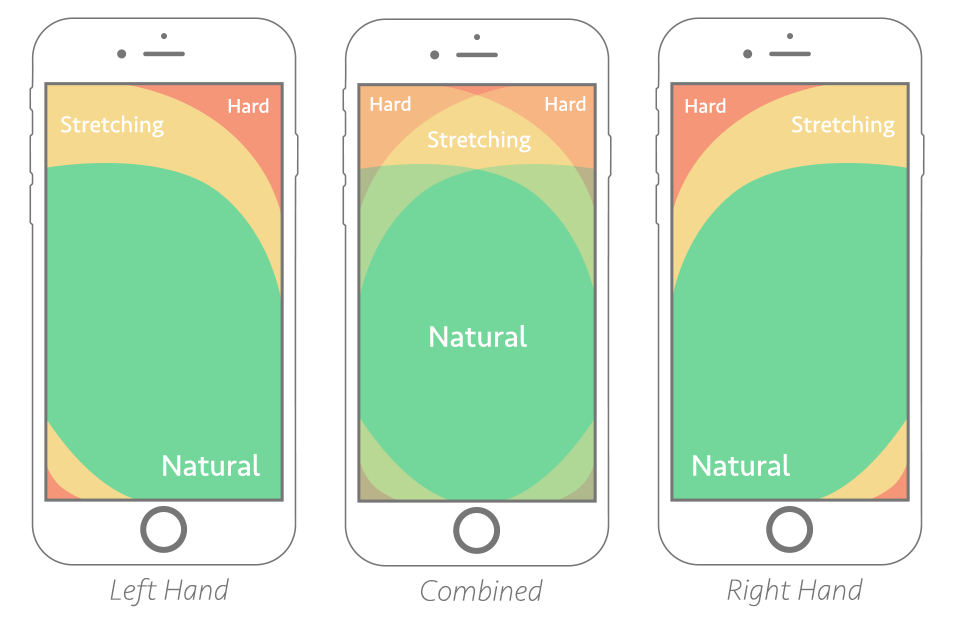
When a user is unsure whether to stay on the site or not, something as simple as an out-of-reach button may sway their hand to the exit button. Make the mobile site count. Design it well.
Lots of customers drop off at a specific point
Do users leave at the same time? Maybe that page has a problem.
Let’s say a whopping 80% of users leave at the checkout page. There’s a good chance that the checkout page is the problem. Examine the analytics and make changes based on data. These drop-off points will inform design changes and result in a better final product.
Rubi CBD, for instance, has a low cart abandonment rate because tradition drop-off points informed design.
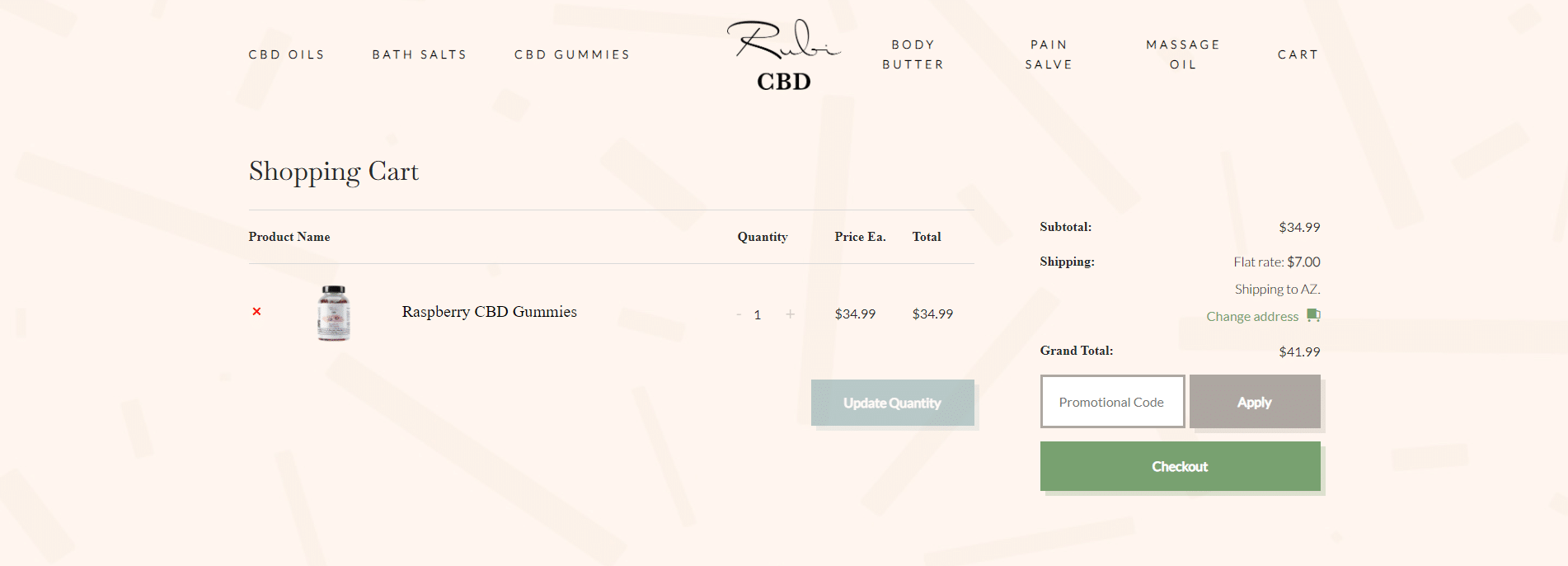
Rubi CBD’s custom design removes drop-off points with a custom, streamlined design, and other merchants should seek the same.
Lots of customers drop off at several points
High exit rates aren’t always bad. An unpopular product page may have anywhere from a 0% to 100% exit rate, and no single page will dictate website success. Instead, merchants should look to the average exit rate. Google, for instance, has several pages with 60-100% exit rates, but the average exit rate is 19.96%.
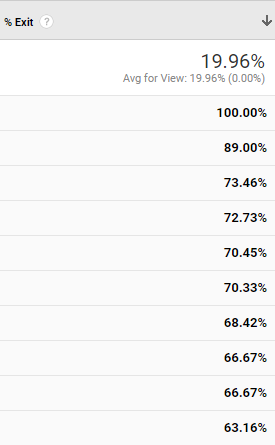
The ideal average exit rate will depend on the industry and product. However, if the website has a high exit rate and looks horrible, it’s safe to assume that a custom theme is well overdue.
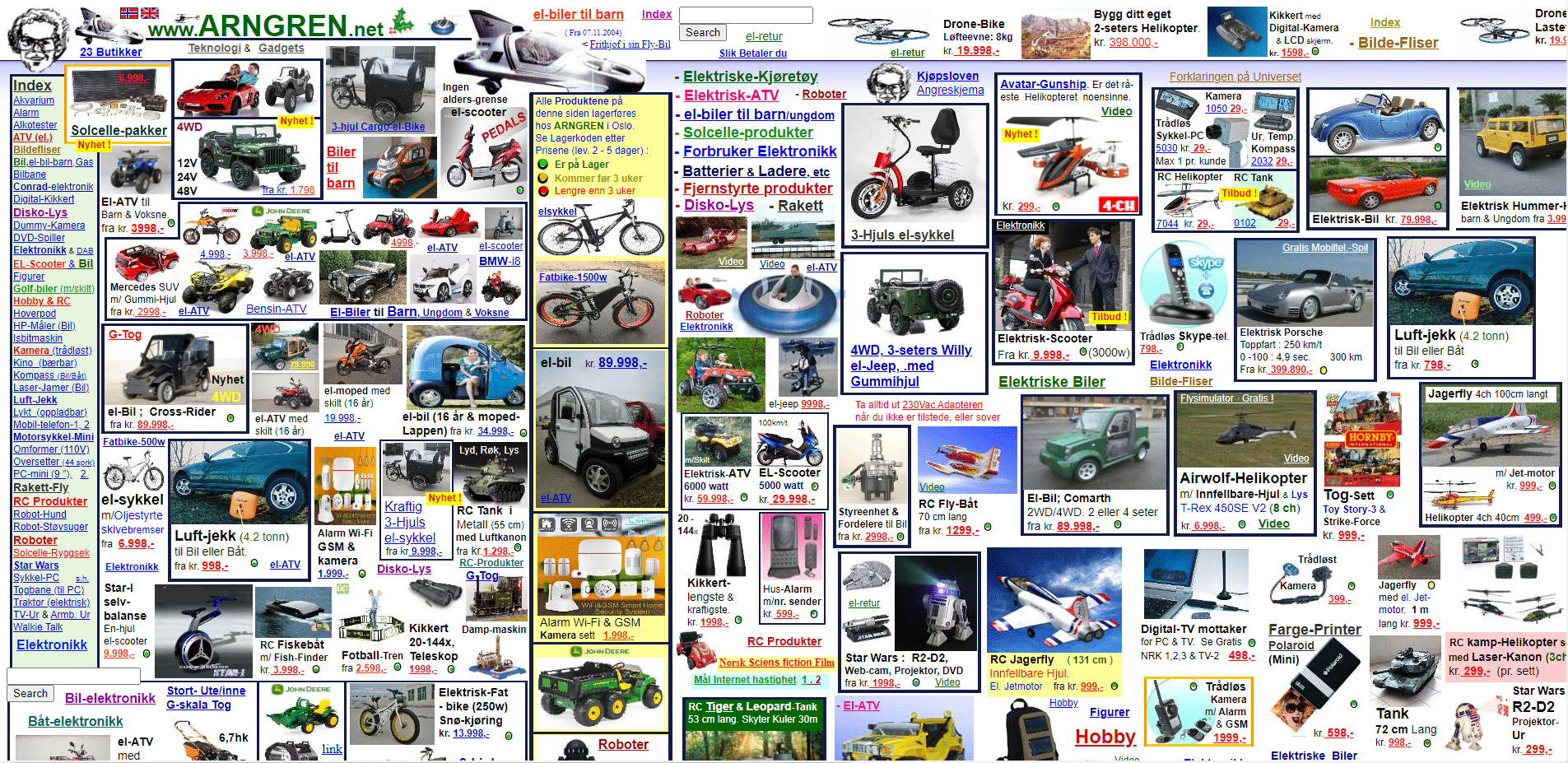
Arngren is a horrendous website that probably has a very high exit rate across the board. Launch Arngren!
If a website’s average exit or bounce is far too high, consider why the analytics are so poor and seek a custom Shopify theme.
Pages load too slowly
Templated themes tend to be much slower than custom ones. After all, bulky features that don’t add to the exact needs of the business take time to load with few returns. If pages load too slowly, the theme may be the problem, and a custom theme may help the pages load much faster.
To check how long a webpage takes to load, use one of the many page speed analysis tools online.

PageSpeed Insights tells merchants how long pages take to load.
DO NOT upgrade to a custom theme when . . .
-
- Sales have stagnated
- the idea seems so good but hasn’t been tested
- pages aren’t ranking high enough on Google
Sales have stagnated
This is a tricky one. Slow sales can indicate that a website needs a redesign, but they can also indicate that the products are the problem. Thus, if sales slow, merchants must consider why.
If sales have stagnated because of the shortcomings of the website itself, a custom Shopify theme may fix the issue. Loading speed, site errors, and poor navigation can all have a huge impact on sales, and a custom design will fix it.
However, if other factors (such as product selection or seasonal demand) are influencing sales, a design won’t help. That’s why so many website redesigns fail: companies see sales dropping, push more money into a redesign, then scratch their heads when sales don’t climb. Yes, stagnated sales are a good indicator that a redesign is overdue, but they should never be the only indicator.
The idea seems so good but hasn’t been tested
Always seek product-market fit. No matter how good an idea is, it should always be treated as bad before it’s tested. Think about how investors work. They always want to look at the data before spending their money. Since a website is an investment, merchants should treat it the same way.
The easiest way to test the concept before investing is to use a free (or even paid) templated theme. Many templated themes look good enough for merchants to test the product early on.
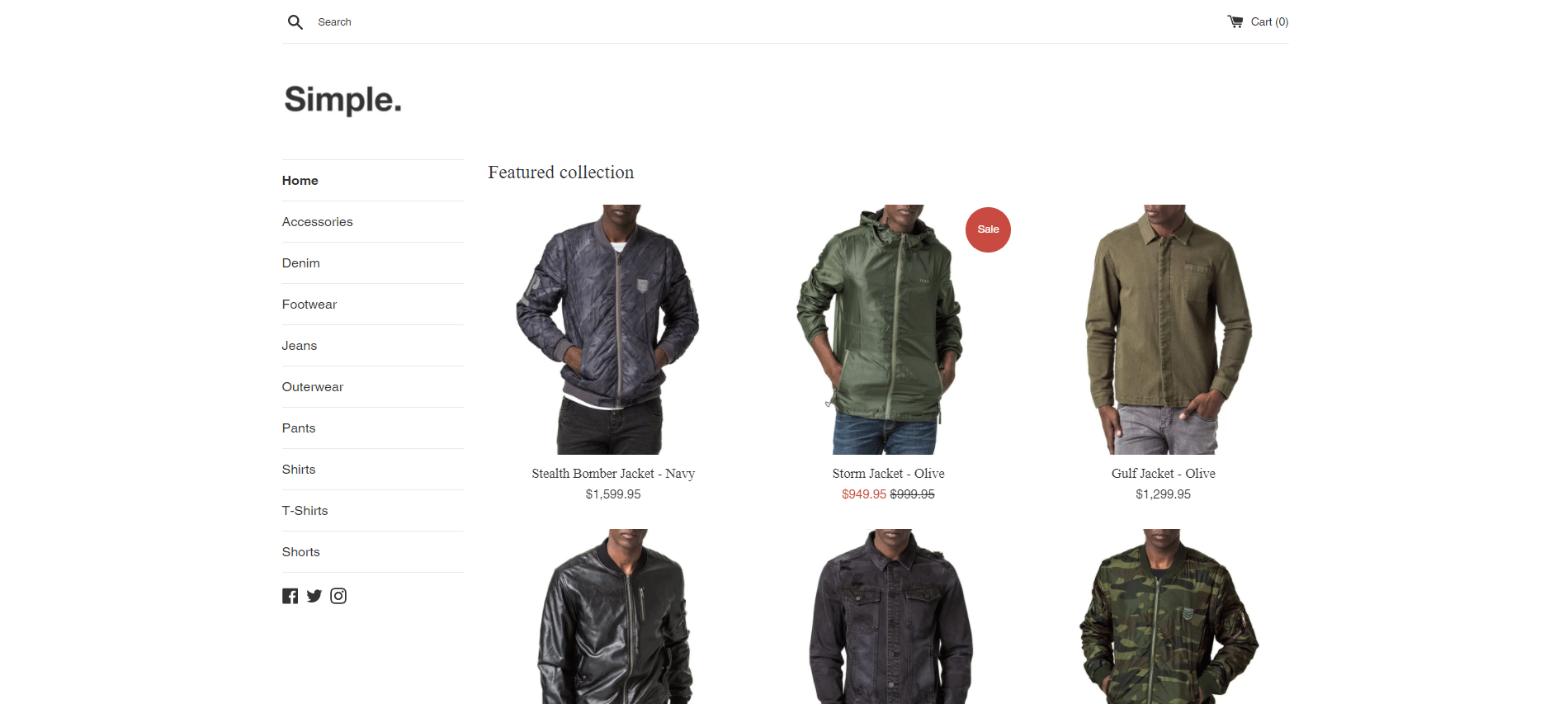
The Simple Shopify theme is a great starting place for merchants to test ideas. Try the theme!
This early version of the website is important not just because it tests the product itself, but because it tests how people use the website. It gives merchants brilliant insight into how customers behave and what they need. Unless the store has specific functionality that a theme just can’t capture, merchants should test the idea and gather data.
Pages aren’t ranking high enough on Google
Do not invest in a new theme just because traffic is dropping. A redesign is not an SEO boost. In fact, if done improperly or by an inexperienced developer, a redesign can even hurt your SEO.
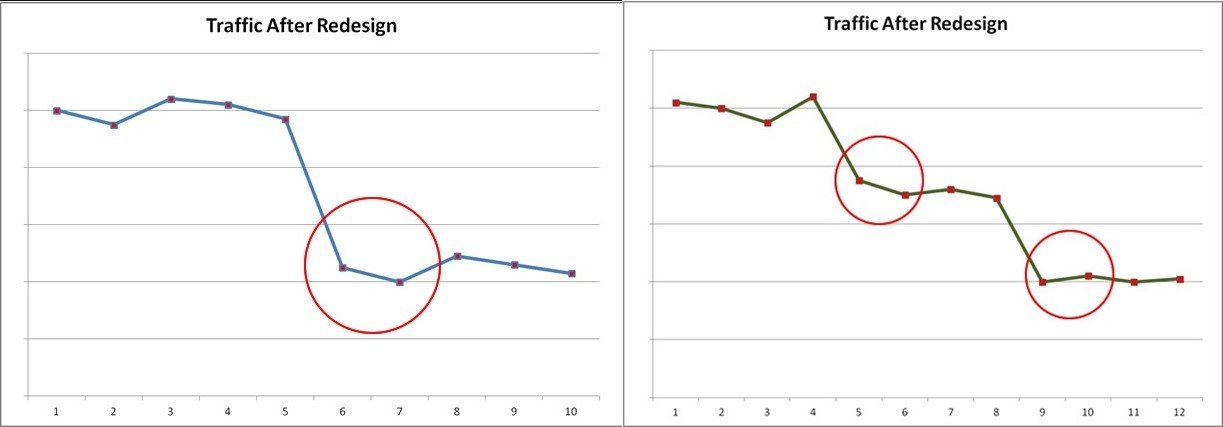
Traffic may drop after a redesign without solid SEO
If SEO is a merchant’s only concern, they should write better content, restructure the site, and employ other SEO strategies. Only seek a new Shopify theme if other strategies don’t work or if analytics suggest that the site design is the problem.
When to upgrade to a custom Shopify theme
Here’s the rule of thumb: upgrade when the potential gains of a custom Shopify theme outweigh its costs. Merchants usually pass this threshold sooner than they realize. After all, a custom Shopify theme is a fixed cost, but the potential returns keep on building.
To upgrade, find a Shopify partner who knows the ins and outs of theme development. Fyresite is a thrice-certified Shopify partner with A+ rating on the better business bureau, and we’re excited to work with you. Reach out today with the form below.